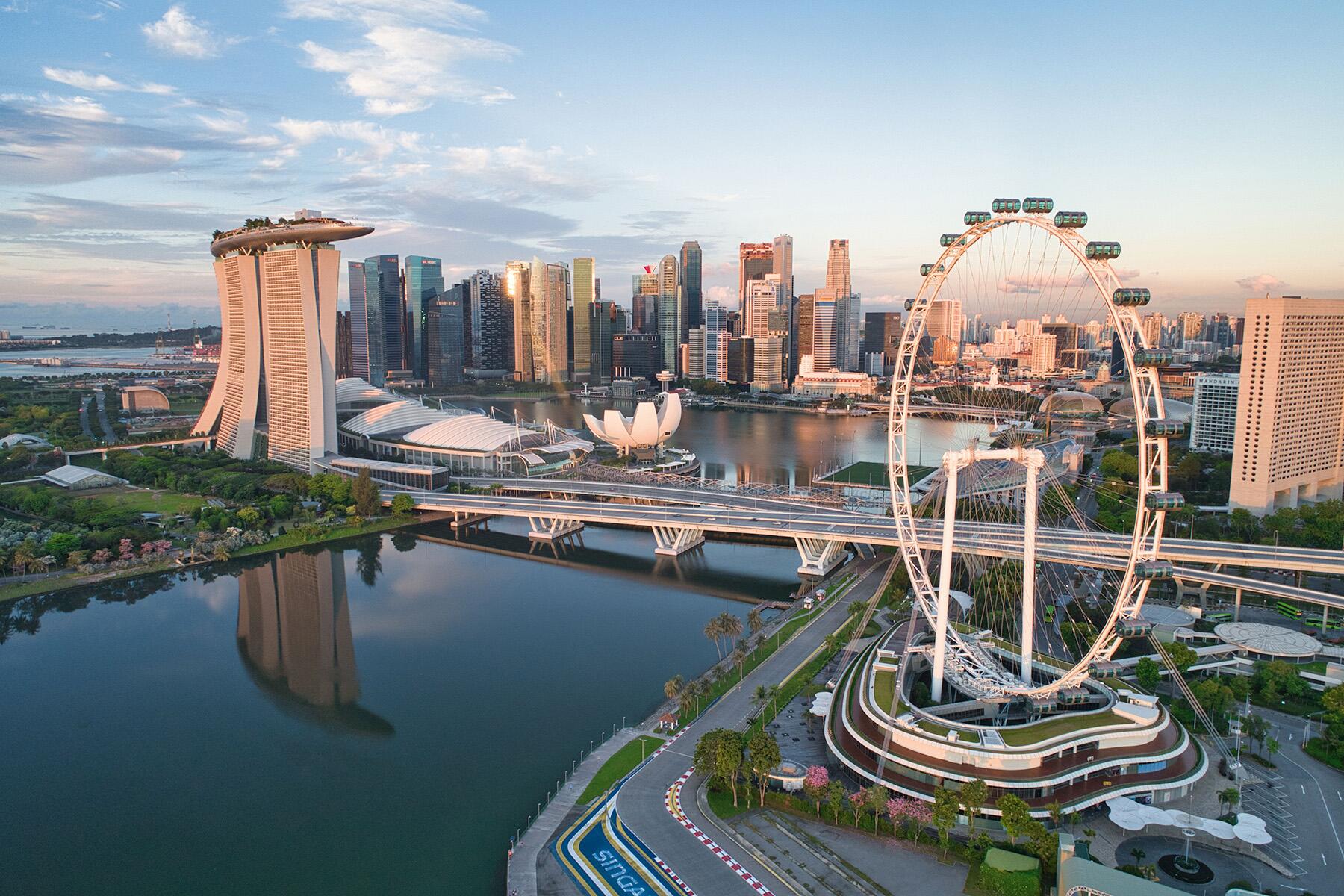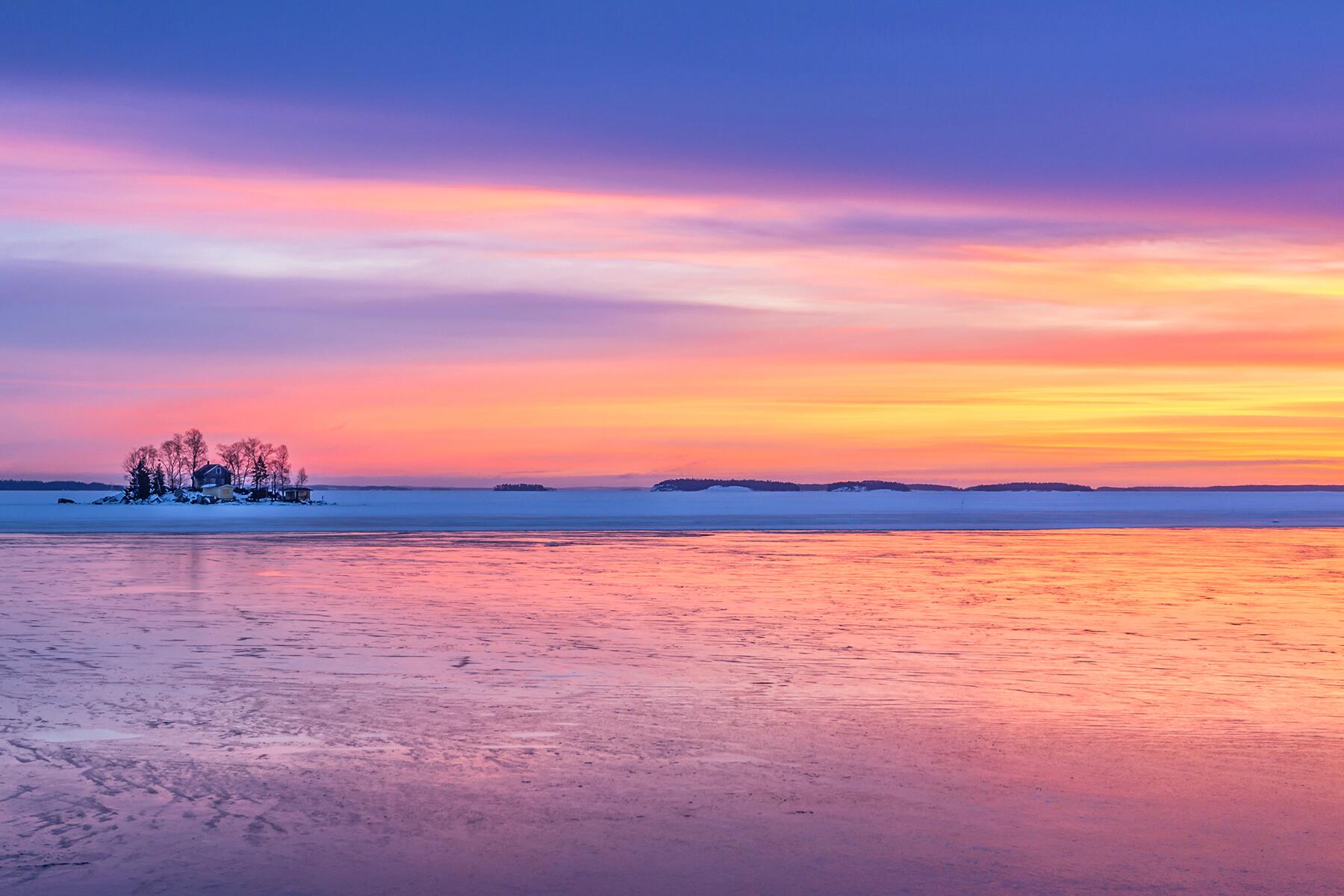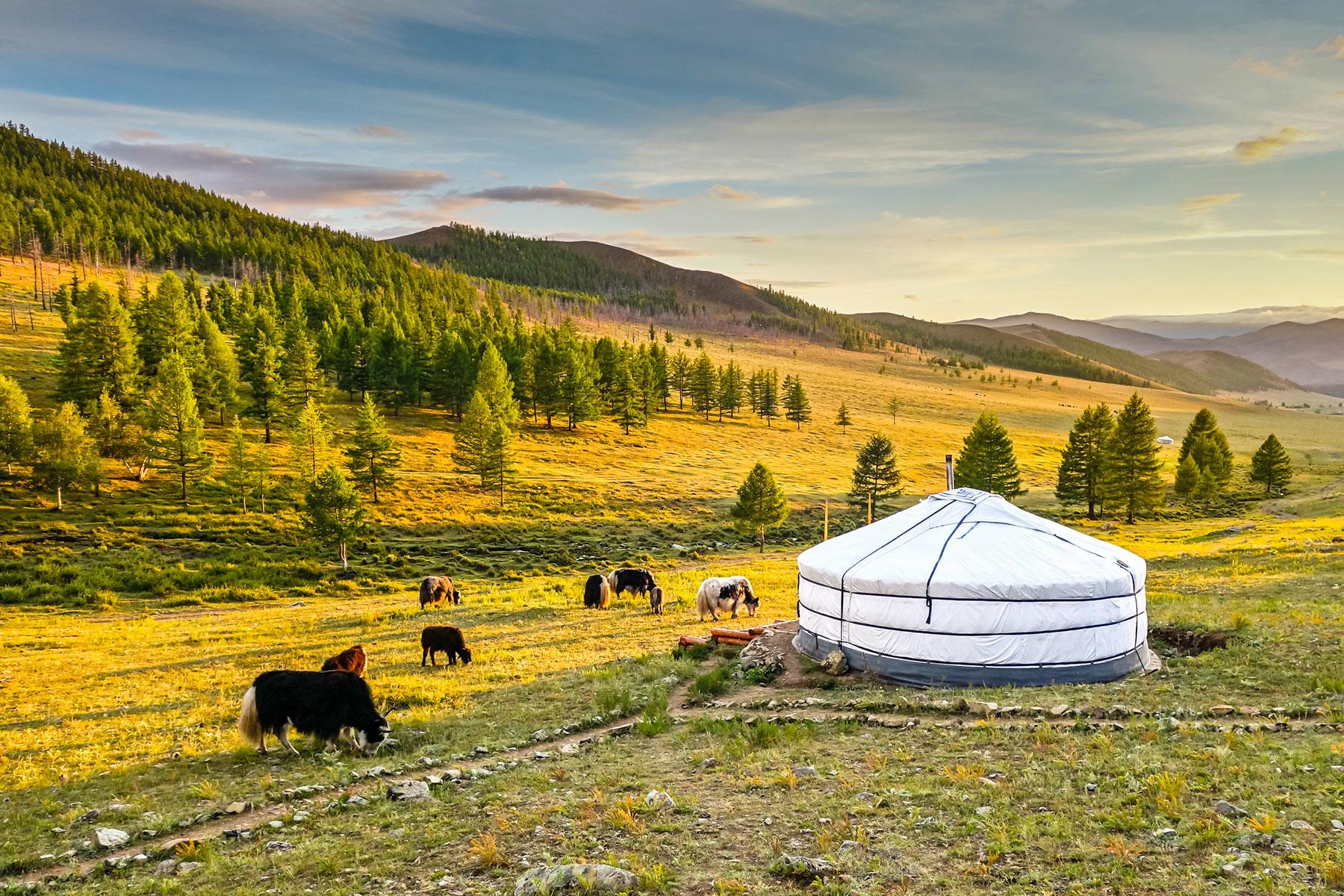- ⁄
- Travel News
- ⁄
- Outdoors •
- Trip Ideas
This vast country is home to one of the last truly nomadic cultures.
Mongolia, like any place, is not just one thing. While the country is home to one of the last truly nomadic cultures, it also has Ulaanbaatar, a modern city with a great mix of lifestyles and traditions. The wide-open spaces of the desert-like landscapes often seem as if they will go on forever, unpopulated by humans and without any road signs (hardly even a proper road), when suddenly seemingly out of nowhere, a resort hotel will appear complete with green lawns, beautiful rooms, and a wonderful outdoor dinner served under canopies and stars.
Top Picks for You
Wide-Open Spaces and Big Skies
For big landscapes that often seem to resemble what another planet might look like, Mongolia is the place to go. To drive or pedal for almost 100 miles a day and never see another vehicle or human, Mongolia is the place to go.
Road signs are virtually nonexistent across the sandy plains and steppes of Mongolia. The roads consist of one to three tracks that extend across the vast emptiness, occasionally converging, then breaking apart again. Most of the tracks contain areas of deep soft sand or kilometer after kilometer of hard washboard ruts that threaten to dislodge teeth from skulls.
Mongolia Expeditions offers both cycling and vehicle tours and that guide across the countryside if you’re not keen to test the abilities of your own compass to lead the way.
Heart-Racing River Crossings
Much of Mongolia doesn’t have roads, at least not roads in the Western sense. In the same vein, there aren’t a lot of bridges to be found either. Most of the time, the rivers are narrow enough to be crossed on foot and shallow enough to only reach up to a person’s knees.
Some of them, though, like the one near Tsagaanuur, Selenge, require a bit of experience and a healthy dose of courage. Here the river breaks apart into multiple wide, deep, rocky sections. And it changes from month to month, year to year, so not even the locals know exactly which route across and through is best.
A Uaz van, the best vehicle for Mongolia, is the choice mode of motor powered transport for the locals. The river can also possibly be crossed by bicycle as long as you’re carrying it, not riding it.
Recommended Fodor’s Video
Gers, the Mongolian Yurt
In Mongolia, yurts are called gers. The two are very similar, the only real difference being the way the roof is made. Gers are an older style of yurt whose sloped roofs are made from straight poles attached to a circle-shaped crown. Yurt roofs, in contrast, are constructed with slightly bent poles shaped by steam and usually have a steeper slope than that of a ger.
The circular shape of gers means they are well-suited to the varied and often harsh weather of the Mongolian steppes. With no trees or shrubs, it can get quite windy out there. Gers can easily resist wind from any direction because of their shape. They also maintain a good temperature inside, remaining cool in the summer heat and warm in the winter or night cold. Perfect for a good night’s sleep!
Free Roaming Livestock
According to the National Statistics Office of Mongolia, the country has 3,177,899 people and 66,218,959 livestock including horses, camels, sheep, goats, and cows. Mongolians don’t fence their animals, but instead, follow them as the herds roam freely across the plains.
On a day of travel across the sand or steppe, it’s not uncommon to see only sheep or goats. Or camels. Until you’ve been stared at by a group of camels as you pass by, you’ve not been properly stared at.
Chinggis Gold Vodka
This local vodka is available in silver, platinum, and gold. Made in Mongolia and at the very economical price of about $5 USD per bottle, it’s great for sipping at night around a campfire after a long day of traveling.
The vodka is smoother than expected for its price and readily available in almost any small village store. The stores themselves are sometimes few and far between, so make sure to stock up when you do find one.
Distributed by the UFC-Group, Chingiss Khan Vodka is made with wheat from the Mongolian steppes. It is then distilled six times with pure alpha grain spirit, then filtered for over 500 hours, or 10 days, through charcoal, quartz, diamonds, black pearls, and silver.
Crafted at the original distillery site of the last Emperor’s Palace, spring water from an ancient well filled with water melting down from the Sacred Bogd Khan Mountains provides the vodka’s finishing touch.
Roadside Shrines and Altars
Abundant, sprouting up from nowhere, and visible from miles away, shrines and sculptures are frequent sights at the tops of mountains and hills in Mongolia.
Sometimes called Tangerism, Mongolian shamanism is an ethnic religion that has been practiced in the country for pretty much as long as anyone can remember.
Ovoos or aobaos are large ceremonial altars made from rock. They are usually decorated with ceremonial silk scarves, called khadaq, usually in a bright blue color. Ovoos are believed to be a representation of a god, whether heavenly, mountain, natural, or ancestral. Locals passing by an ovoo will circle it clockwise three times while praying. They may leave offerings of stone, or khadaq, or even money, milk, and/or bottles of alcoholic beverages.
The Gobi Desert
Vast emptiness and winds up to 30 to 40 miles per hour but also where lots of dinosaur remains have been found, the Gobi Desert is one of those environments that elicit awe.
A cold desert, the Gobi can vary in temperatures of as much as 35 degrees Celsius (63 degrees Fahrenheit) in a mere 24 hours. The desert is never for the faint-hearted, and the Gobi especially so. Bicycling across the desert into headwinds that never let up can beat down even the strongest of cyclists. Yet still, the mere fact of crossing via your own power is enough to keep the same cyclists moving.
Due to various reasons including deforestation, overgrazing, and human activities, the Gobi is rapidly expanding.
Children’s Day Festival in Moron
Children’s Day is a national holiday in Mongolia and is held every year on June 1. A high percentage of the Mongolian population, over a third, are under the age of 18.
On Children’s Day, the kids have the day off from school and the whole town or village comes out to celebrate them at their own carnival. In Moron, also spell Murun, the town square is filled with carnival games where stuffed animals can be won, inflatable castles, bikes, go-carts, and drivable trains, and, of course, BB guns. Watch the kids careen around a town square on bikes, scooters, and go-carts.
Local Kids on Bikes
Bikes are one of the universal symbols of freedom and independence, something most everyone yearns for from a young age. Every small village in Mongolia has its own little bike gang, a group of three to six young boys who will immediately come to check out any travelers that might show up.
If someone arrives on a bike alone, they are instantly kin, and the kids in Mongolia are infinitely curious and courageous. They’ll pedal through campsites, popping wheelies to show off, skidding to a stop in front of the dinner tent, laughing, sharing their ice creams, and aiding in tent construction. They are the ambassadors of their villages.
Hospitality
Mongolians are incredibly welcoming and will invite travelers and visitors home to dinner after only just meeting them. There are a few things to keep in mind though when entering the ger of a family. First, don’t stand in the threshold or lean against the frame. Also, try to refrain from whistling or pointing at anything. Do thank your hosts and accept any food and drink they offer. It’s sure to be delicious
Ulaanbaatar
The capital city itself deserves at least a few days of wandering around to the sights and experiencing the diverse, local, culture. About 45% of Mongolia’s population lives in the city. The Springs Hotel, with its excellent English speaking staff, is a great base from which to explore the city. From there, travelers can visit Sukhbaatar Square, the Winter Palace of Bogd Khan, as well as the numerous museums. For a change of pace after a day of museum going, visitors can head to the new, modern, high-end Shangri-La Mall, also located within walking distance of the Springs Hotel.




